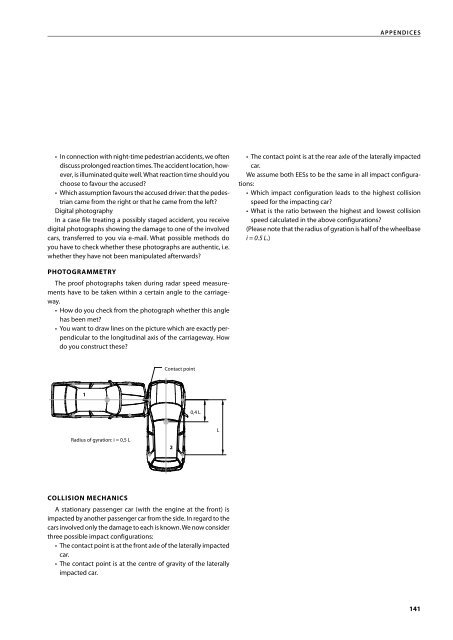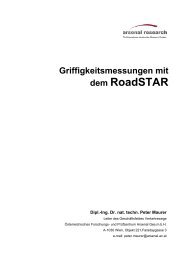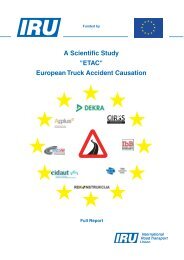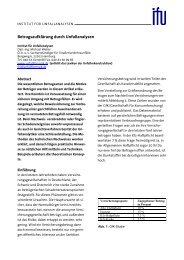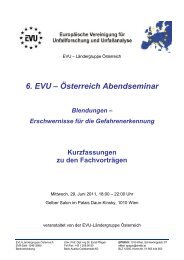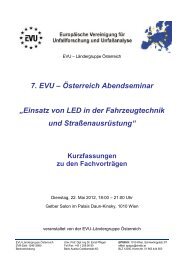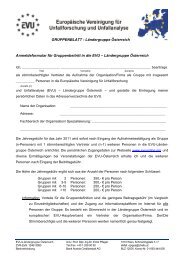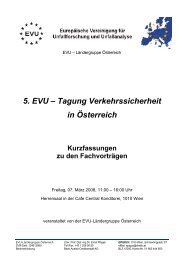THE QUERY PROJECT - European Commission - Europa
THE QUERY PROJECT - European Commission - Europa
THE QUERY PROJECT - European Commission - Europa
You also want an ePaper? Increase the reach of your titles
YUMPU automatically turns print PDFs into web optimized ePapers that Google loves.
• In connection with night-time pedestrian accidents, we often<br />
discuss prolonged reaction times. The accident location, however,<br />
is illuminated quite well. What reaction time should you<br />
choose to favour the accused?<br />
• Which assumption favours the accused driver: that the pedestrian<br />
came from the right or that he came from the left?<br />
Digital photography<br />
In a case file treating a possibly staged accident, you receive<br />
digital photographs showing the damage to one of the involved<br />
cars, transferred to you via e-mail. What possible methods do<br />
you have to check whether these photographs are authentic, i.e.<br />
whether they have not been manipulated afterwards?<br />
PhOTOGRAmmETRY<br />
The proof photographs taken during radar speed measurements<br />
have to be taken within a certain angle to the carriageway.<br />
• How do you check from the photograph whether this angle<br />
has been met?<br />
• You want to draw lines on the picture which are exactly perpendicular<br />
to the longitudinal axis of the carriageway. How<br />
do you construct these?<br />
1<br />
Radius of gyration: i = 0,5 L<br />
COllISION mEChANICS<br />
Contact point<br />
0,4 L<br />
A stationary passenger car (with the engine at the front) is<br />
impacted by another passenger car from the side. In regard to the<br />
cars involved only the damage to each is known. We now consider<br />
three possible impact configurations:<br />
• The contact point is at the front axle of the laterally impacted<br />
car.<br />
• The contact point is at the centre of gravity of the laterally<br />
impacted car.<br />
2<br />
L<br />
A P P E n D I C E S<br />
• The contact point is at the rear axle of the laterally impacted<br />
car.<br />
We assume both EESs to be the same in all impact configurations:<br />
• Which impact configuration leads to the highest collision<br />
speed for the impacting car?<br />
• What is the ratio between the highest and lowest collision<br />
speed calculated in the above configurations?<br />
(Please note that the radius of gyration is half of the wheelbase<br />
i = 0.5 L.)<br />
1 1


